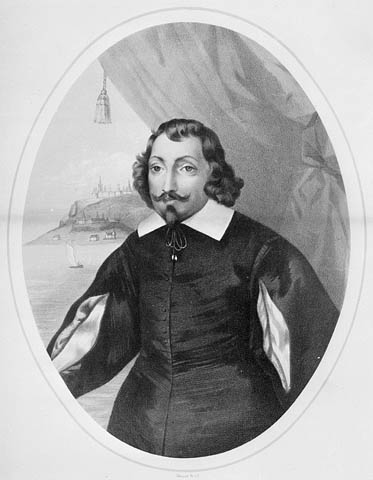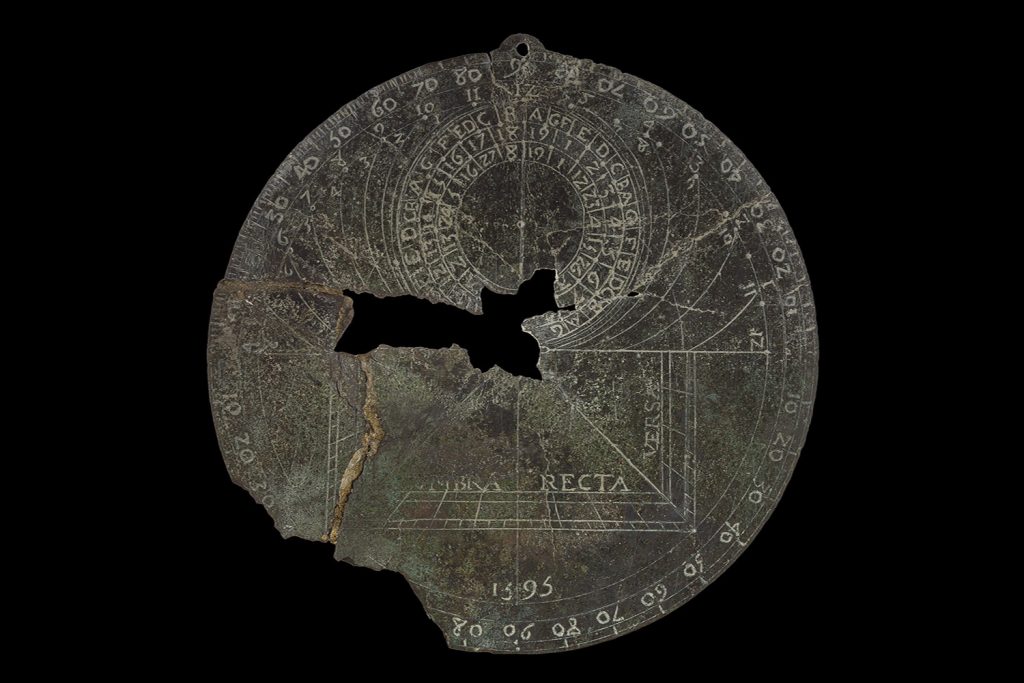The Newcomers
Scholars of this period are fortunate to have a rich seventeenth-century documentary record of the lives of Northern Iroquoians. The record for the Wendat is especially extensive. The works of Samuel de Champlain, an experienced soldier and explorer, record his observations of Wendat and Tionontaté life. During the winter of 1615-1616, Champlain lived among the Wendat and wrote about their clothing, settlements, military aspects, and hunting tactics as well as their economy.

False portrait of Samuel de Champlain, 1854. Credit: Library and Archives Canada, copy neg. number C-006643
Also detailed is the account of Gabriel Sagard, a Récollet friar who spent the winter of 1623–1624 with the Wendat. Bruce Trigger, Canada’s most renowned ethnohistorian and archaeologist, once noted that Sagard’s account was one of the world’s first substantial ethnographies. Sagard also compiled a phrasebook and comprehensive dictionary of the Wendat language.

Jesuit Astrolabe found on Christian Island. This is one of only three found thus far in Canada that date to the time of Champlain.
By far the most comprehensive records of Wendat life are the annual accounts of the Jesuit priests who lived among the Wendat from 1634 until 1650. These regular reports by those Jesuits who lived among the Wendat are filled with descriptions of Wendat life and society. Jesuit missions in North America began early in the seventeenth century. Christian proselytization was an important component of the Christian church at this time around the world. The North American Jesuit mission effort was paralleled by missions in South America and Asia, their Relations always representing a kind of ethnographic record and history of those places.
Newcomers (Closed captions available in EN and FR) – View this video with a transcript (EN)
All of these sources must be employed with caution, however, as they were written by outsiders with their own agendas. Trigger wrote a historical analysis of the lives of the Wendat in his two volumes entitled The Children of Aataentsic (1976), which combines history, ethnography, and archaeology to give Wendat peoples their own voices in their interactions with their neighbours and the European colonial enterprise. In 1999, Georges Sioui , a noted Wendat scholar, added a contemporary Wendat voice to the history of his people with his book entitled Huron-Wendat: Heritage of the Circle.
It is my belief that the science of history is now aware of the need to integrate perspectives… It was this vision that inspired a group of people, who seven centuries ago, created in central-southern Ontario an embryo of what is to becomes the society of modern North America… a mingling of cultures united by differences and the respective constraints… animated by the desire to enlarge the Circle of exchange and communication to all peoples.
Exerpt of Huron- Wendat: Heritage of the Circle George E. Sioui pg. 88

